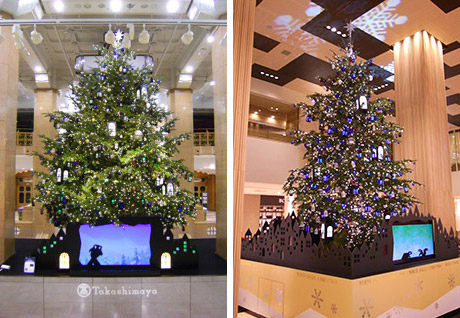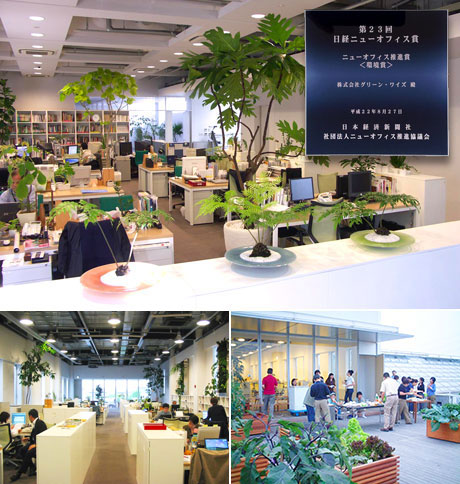TOPICS
-
- Award
Jindaiji Garden
2020 GOOD DESIGN AWARD -
- News
SDGs Workshop in Green Wise
-
- News
Milan Design Week 2019
‘Stem’ -
- News
The First LEED for Homes & SITES
Double Platinum Certified project
Jindaiji Garden -
Received Gold in
JCD Design Award 2018 -
Triple Victory at ASLA Florida Design Award 2018!
-
Received the Award of Appreciation at 2018 World Green Infrastructure Congress!
-
Milan Design Week 2018
‘Shaping Beauty’ -
“Shichigahama Home-for-All” has been awarded a Ministry of the Environment Award
PHILOSOPHY
Working with greenery as we do, we see unusual phenomena in the plants and living things around us every day.
In the past few years, for example, we frequently see trees in the street that have withered and been damaged in the intense heat in Tokyo. On the other hand, we see foliage plants growing in people’s gardens and insects that should not be in Tokyo in winter.
Each one of these phenomena may be very trivial on its own but we see them as little signs of impending disaster.
At Green Wise, we have begun various projects to cultivate a lifestyle in nature and linked to nature with the theme of Slow Green to combat this situation. We will not create this project on our own. We aim to get back to nature and connect with the next generation through the initiatives of companies, organizations and individuals who approves of our themes.
It is also to cultivate this kind of connection that Green Wise offers a Green Platform. We hope that as many people and living things as possible can connect with each other and continuously expand this circle.
We also hope that we will be able to face up to difficult issues together and take the first step to creating an even better future in harmony with nature – a society that co-exists with the environment.
ARCHIVE
2010s
-
2018
-
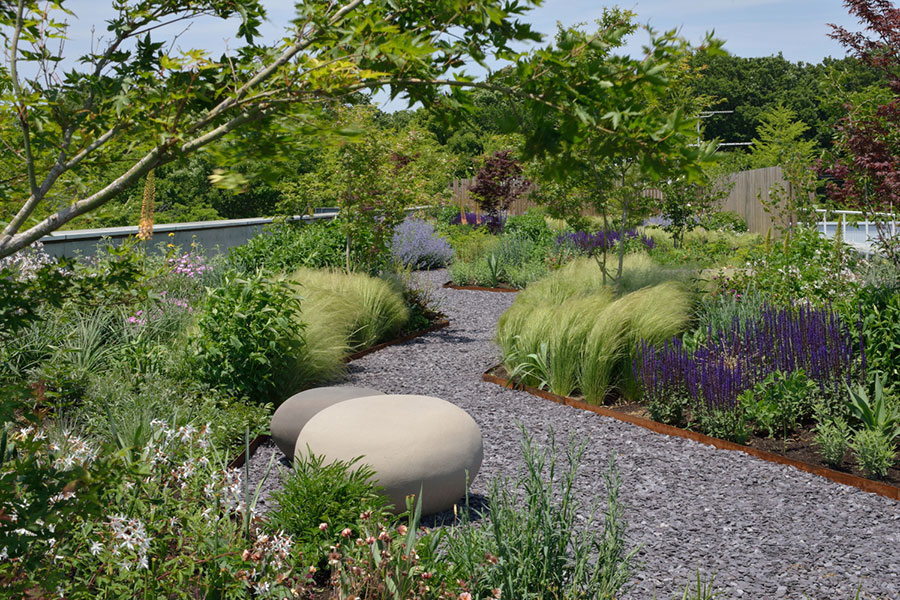
Green Wise Headquarters Rooftop garden was certified by SITES as first project outside of the US, and was awarded GOLD.
more info
2017
-
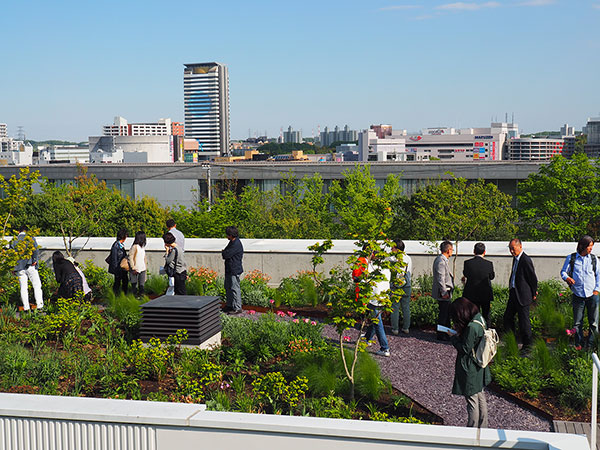
A rooftop garden that has been programmed according to the passage of the seasons
more info -
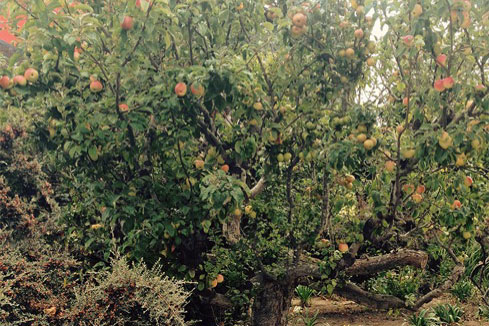
Forum to commemorate the 111th anniversary of the founding of Green Wise
more info
2016
-
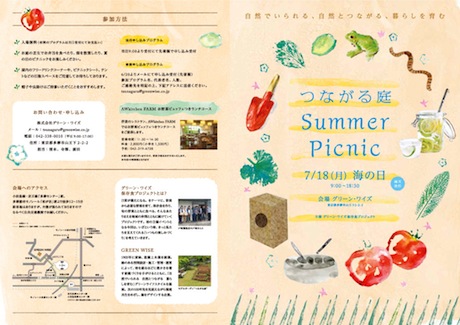
TSUNAGARU NIWA Summer Picnic
held at Tama Center Headquarters
more info -
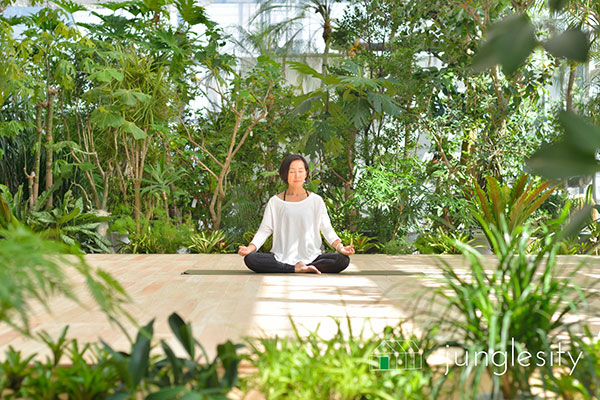
Japan’s first greenhouse yoga studio Junglesity
opened at Tama Center Headquarters
2015
-
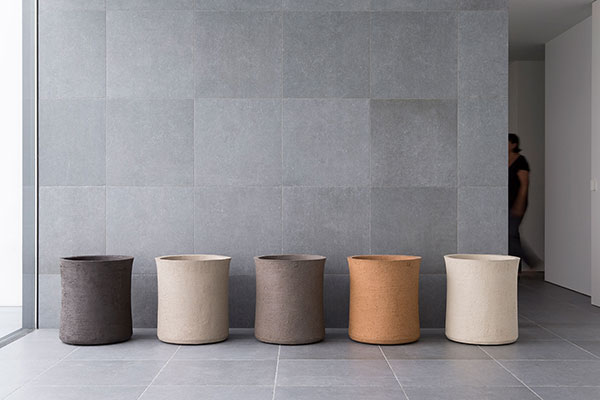
Began to stock Atelier Vierkant products as Japanese sales agent
more info
2014
-
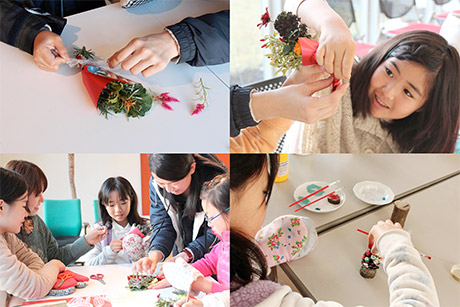
Hilltop Harvest Festival held at Tama Center Headquarters
more info -
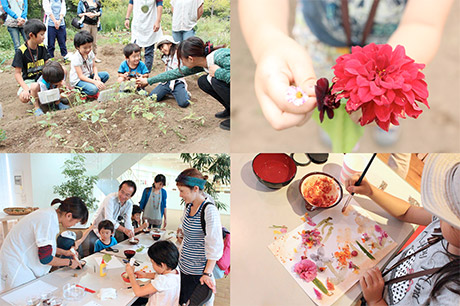
Connection × TSUNAGARU NIWA
held at Tama Center Headquarters
more info
2013
-
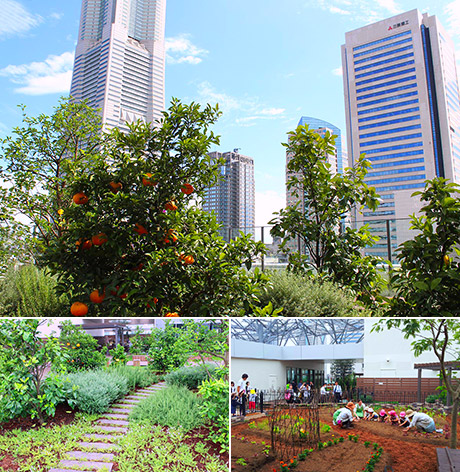
MARK IS MINATOMIRAI’s MINNANO NIWA is open
more info
2012
-

AW Kitchen FARM Tama Center opened at Tama Center Headquarters
more info
2011
-

Attained Excellent Stage 3 in SEGES 2011 certification
more info
2010
-
2000s
-
2009
-
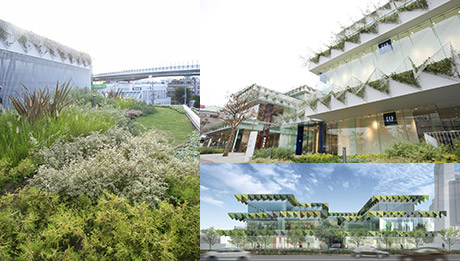
In charge of greening works for renewal of Tamagawa Takashimaya Department Store Marronier Court
more info -
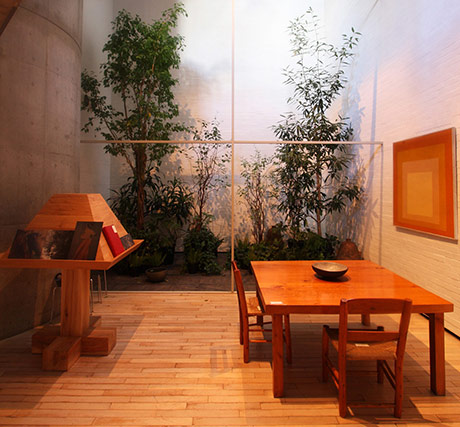
Collaborated with Luis Barragan Exhibition at Watari-um (The Watari Museum of Contemporary Art).
more info
2008
-
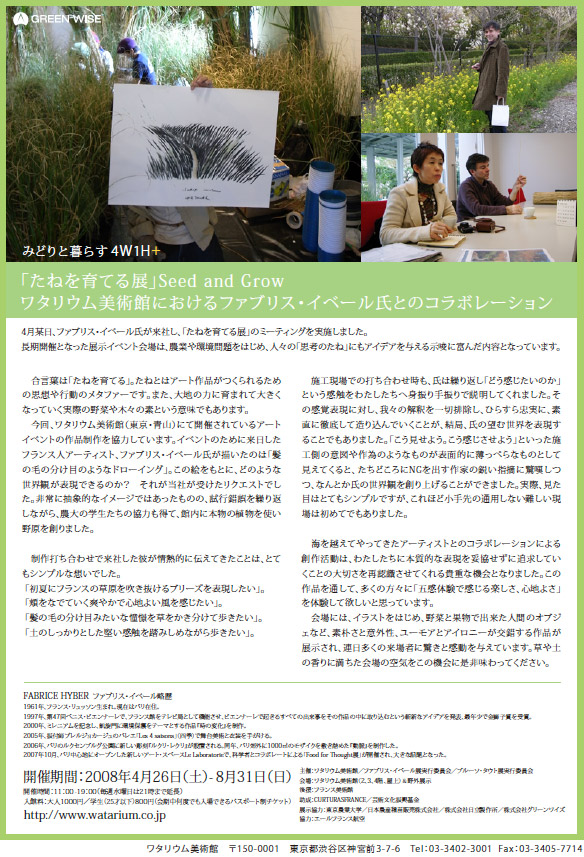
Collaborated with Fabrice Hybert for the Seed Growing Exhibition at Watari-um (The Watari Museum of Contemporary Art).
more info
2007
-
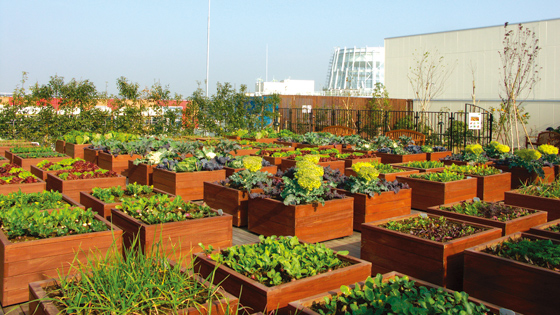
Vegetable Garden Course held at LaLaport Kashiwa
more info
2005
-
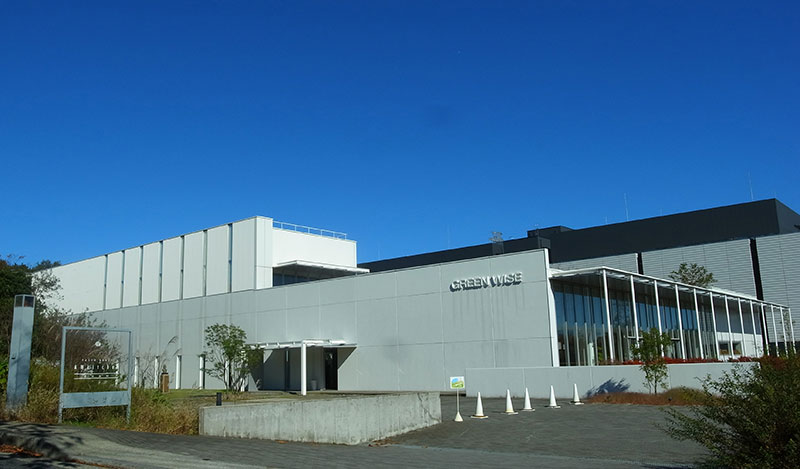
Completed new company building and moved headquarters to Tama Center.
2002
-

Company name changed to Green Wise Co., Ltd. Yuichi Tamaru named as Representative Director.
-
1990s
-
2000
-
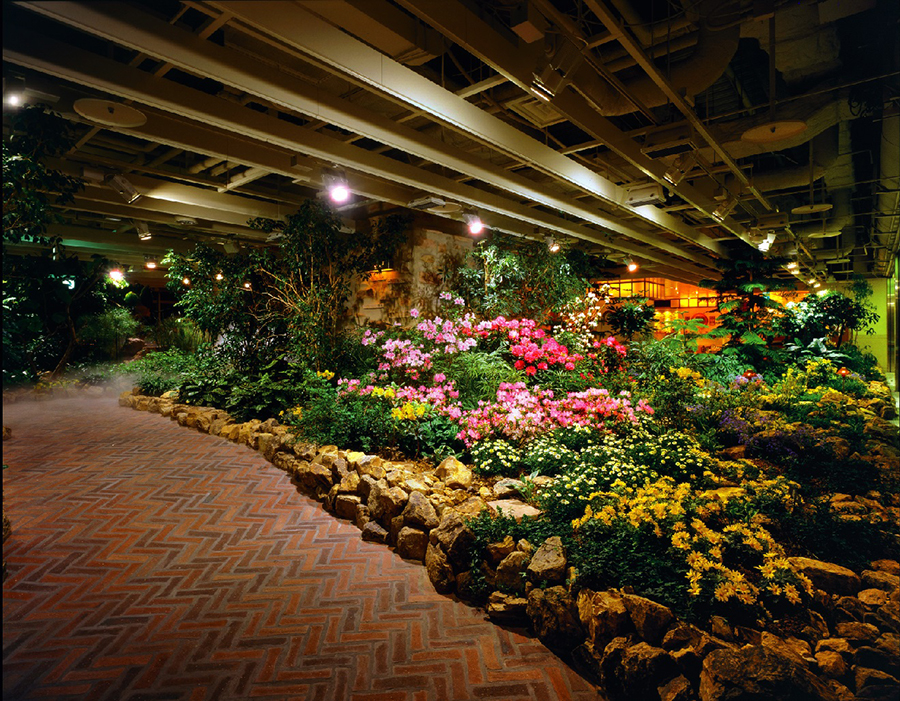
Installed a 2,000m2 scale indoor garden on the 12th floor of an office and commercial building in Nagoya, which was at the time the largest indoor garden ever constructed in Japan.
1990
-
Commenced the sale of the first interior green in Japan at a commercial facility in Yokohama.
1995
-
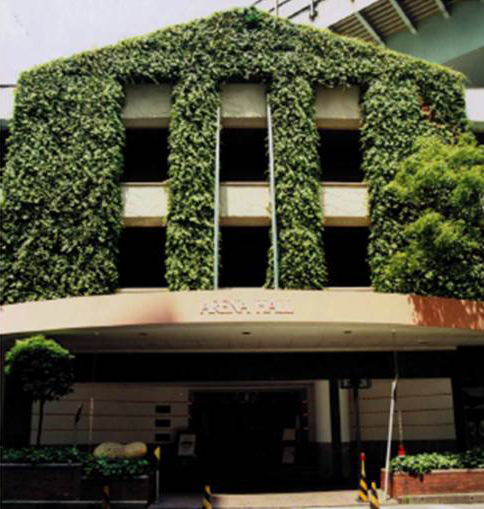
Installed wall greening on the West Building of Tamagawa Takashimaya Department Store.
-
1960s
-
1969
-
Rooftop greening with pearl loam method at Tamagawa Takashimaya Department Store.
Currently managing over 4,000m2 of green space for the store overall.
1962
-
Rooftop garden constructed using lightweight artificial soil (pearl loam method) developed by Tokoen for the rooftop garden at Takashimaya in Nihonbashi, said to be the first in Japan at a commercial facility.
-
1950s
-
1953
-
Created the first TV set garden when NHK broadcasting began and have continued to create sets since then.
-
1910s
-
1915
-
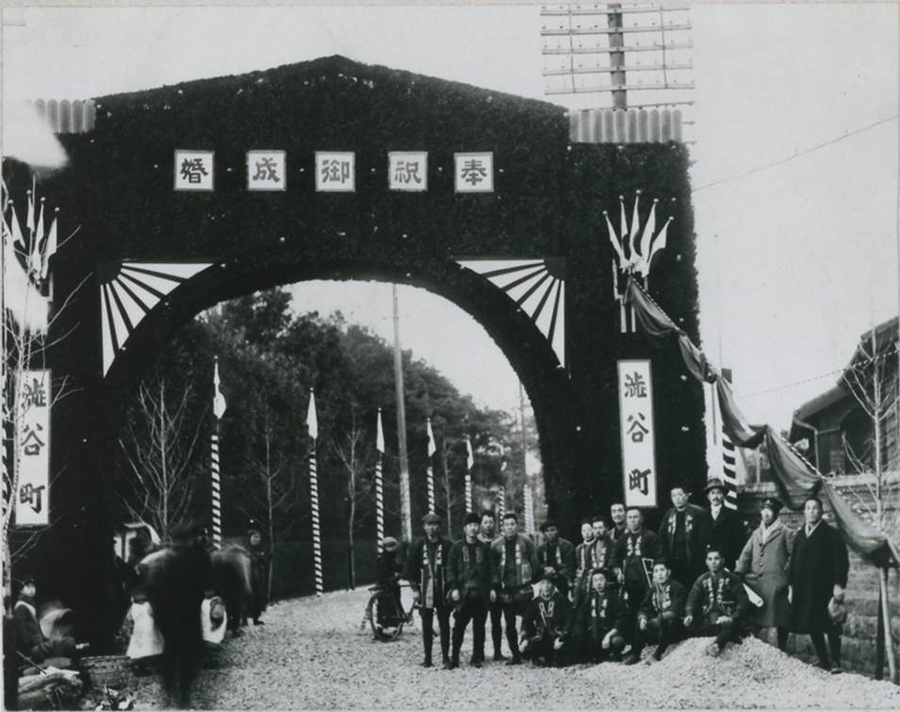
Took part in planting the trees for Meiji Shrine’s forest.
-
1900s
-
1905
-
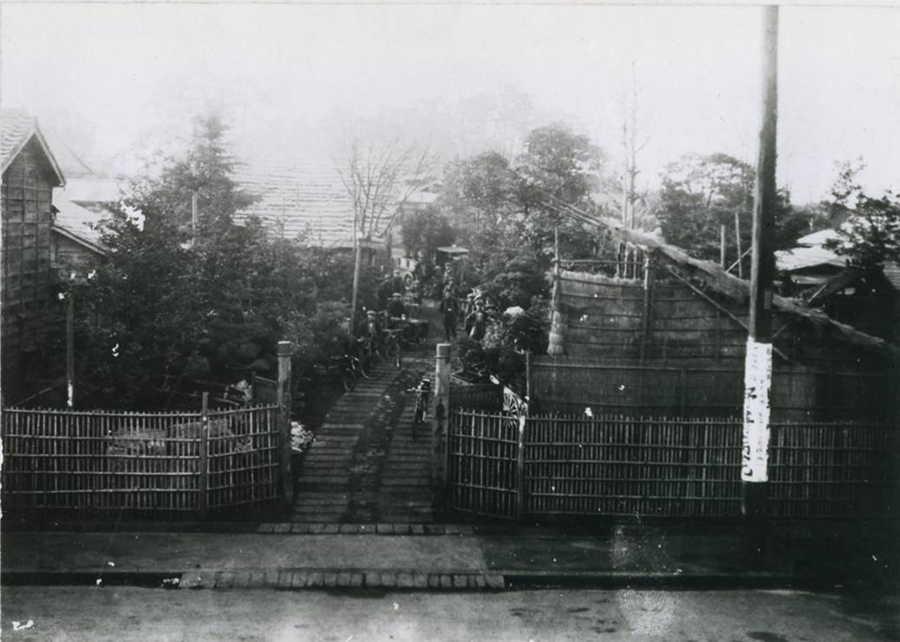
Kamekichi Tamaru set up Tokoen in Shibuya Village, Tama, Tokyo (now Ebisu in Shibuya Ward).
Began landscape architecture, greenhouse plant cultivation and rental and Japan’s first plant and tree rental company.
-
